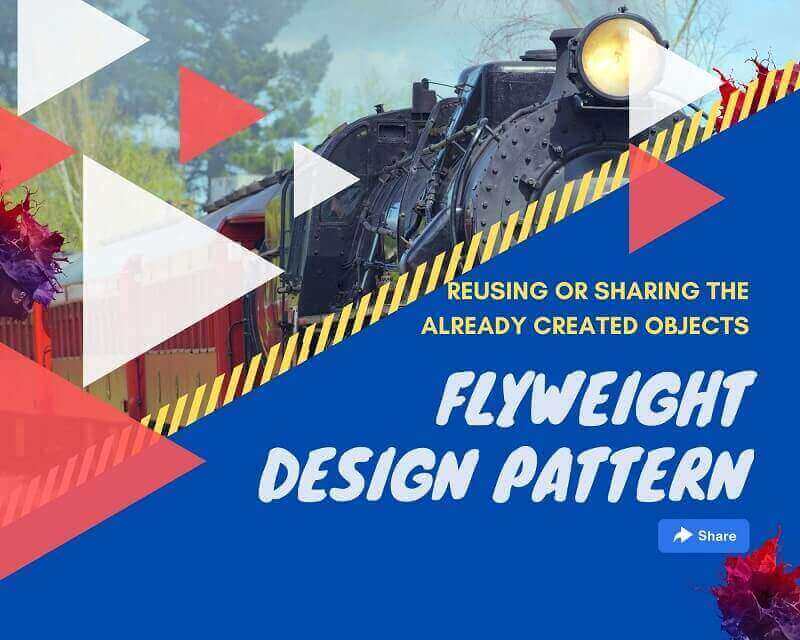Design patterns are solving a common problem in software engineering. Each Pattern is a well-defined standard answer for a specific problem. Design Pattern developed by experienced developers to handle a general problem in the most effective way. Developers found the best answer for the specific scenario by their experience over the period of time.
Design patterns create big advantages and help beginners to void certain problems once start their developer life. Design patterns divide into three types according to the situation and usage. Before moving on to types of design patterns let’s see what are the advantages of patterns.
Advantages of design patterns
- Patterns create reusable objects in multiple places
- Those solutions maintain industry-level standards
- Saves a lot of time and cost for wasting on fixing recurring problems
- Provides the best solution to solve a specific task.
- If Design patterns apply to a problem then it’s easy to debug and understand.
- Easy to extend and easy to maintain.
Types of Design patterns
- Creational patterns: Creational patterns consider creating objects in an optimal manner. Hides create objects and logic.
- Structural patterns: Structural patterns use for the effective connectivity between objects. Object-oriented programming concepts like Inheritance heavily use these types of patterns.
- Behavioral patterns: Behavioral pattern’s objective is to communicate smoothly between objects.

There are three types of design patterns but there could be more types and will be introduced in the future. so no need to stick to this type just remember the patterns and concepts. Below are the most famous patterns heavily used in programming. Images may help to understand the design pattern example in java once go inside the links. Let’s go through them now.
Creational Patterns
Structural Patterns
Behavioral Patterns
Memento Design Pattern | You need to keep state

Observer Design Pattern (99 New Notifications)

Mediator Design Pattern: It is Great Negotiator

Iterator Design Pattern (Great on your favorite looping)

Interpreter Design Pattern: A simple Converter

Command Design Pattern (Order Now)

Strategy Design Pattern: Happy To See Your Choice

Chain of Responsibility Design Pattern (New)

Types Of Design Patterns In Tabular
All the famous design patterns have their own article but there are some other patterns available. The table includes all the patterns in the industry.
| Creational Patterns | Structural Patterns | Behavioral Patterns |
|---|---|---|
| Factory Pattern | Adapter Pattern | Chain Of Responsibility Pattern |
| Abstract Factory Pattern | Bridge Pattern | Command Pattern |
| Singleton Pattern | Composite Pattern | Interpreter Pattern |
| Prototype Pattern | Decorator Pattern | Iterator Pattern |
| Builder Pattern | Facade Pattern | Mediator Pattern |
| Flyweight Pattern | Memento Pattern | |
| Proxy Pattern | Observer Pattern | |
| State Pattern | ||
| Strategy Pattern | ||
| Template Pattern | ||
| Visitor Pattern |
Summary
Design Patterns are one of the most famous solutions in programing and millions of people follow them to fix their tasks, design projects, and so on. Most of the patterns create based on basic OOP concepts (If your beginner then read our basic OOP, Encapsulation, Inheritance, Polymorphism, and Abstraction articles with great examples )
There are a lot of articles and design pattern books available with different examples to read. Other than our article if you are interested in this topic you could go through the below books as well.
| Books | Description | |
|---|---|---|
 | Head First Design Patterns: A Brain-Friendly Guide | My favorite and it’s more readable. There are good examples and they look good to beginners as well. |
 | Design Patterns: Elements of Reusable Object-Oriented Software | There are 23 design patterns. showing how to select an appropriate pattern for your case. |
 | Head First Design Patterns: Building Extensible and Maintainable Object-Oriented Software | There are a lot of simple examples showing how to use design patterns in the correct way. Those are based on SOLIC principles. |
There are a lot of design pattern ebooks on Amazon. Those design patterns are written with great examples in a different programming language. I included a few of them according to their best ranking.



































5 thoughts on “23 Design Patterns & intro | All in one page now”
Nice post. I learn something totally new and challenging on sites I stumbleupon every day. Its always interesting to read articles from other authors and practice a little something from other web sites.
you have a great blog here! would you like to make some invite posts on my blog?
Thank you for Reaching us https://ennicode.com/ , Thank you for the invitation. This time bit busy with this blog work and looking to write other new posts in near future. This is still new blog and has to write a lot in the future. I will definitely contact you in the future Thank you.
I am really inspired together with your writing skills and also with the format for your blog.
Is that this a paid topic or did you customize it yourself?
Either way keep up the excellent high quality writing, it’s rare to look a
nice blog like this one these days..
This is ours Thanks